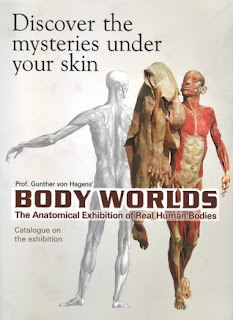Week 7: Neuroscience + Art
This week,
students of DESMA 9, a class in the Design | Media Arts department at UCLA
taught by Victoria Vesna, learned about how neuroscience inspires artists who
are fascinated with the human mind. The history of neuroscience is relatively
short, starting with the theory of phrenology in 1796 by Franz Joseph Gall.
This physician believed that various cerebral functions were localized, meaning
that individual intellect and personality could be predicted based on brain or
skull shape. Ramon y Cajal (1852-1934) then pioneered microscopic studies of
the structure of the nervous system, receiving the Nobel Prize in 1906 for
being the founder of neural anatomy. Most recently, the Brainbow was invented
in 2007 by Harvard professors of neurobiology, which effectively tagged
individual neurons in the brain with fluorescent proteins. This revolutionary
technology led to beautiful and informative images for scientists (Vesna, 2012).
(Complex neural pathways in a zebra fish larva, which were
illuminated using Brainbow fluorescence microscopy.)
What surprised
me most about this week’s lectures was learning that Sigmund Freud was a
cocaine addict. Despite his invaluable works on the unconscious mind, the
psychiatrist’s experimentations with the drug led to the loss of his license
and many lawsuits. I can see how psychedelic drugs motivated writers and
scientists—after all, these drugs were only deemed illegal following cases of
abuse. But, the addictive hallucinogenic effects also led to the demise of
famous figures such as Timothy Leary, who used LSD to teach his graduate
students about psychology (Vesna, 2012).
(Freud’s interests in cocaine and Leary’s advocacy for LSD
indirectly pioneered new thoughts in the study of psychology. Then again, the
psychiatrists also abused the drugs, leading to their demise.)
While
listening to Vesna’s lectures, I started thinking about how artists and
scientists constantly explore ideas regarding dreams and the unconscious mind.
I thought about the movie, Inception,
where “extractors” infiltrate the subconscious of their targets to obtain
valuable personal information or implant ideas. In terms of neuroscience and
art, this movie perfectly captures the dangers of the human mind, especially
how unconscious thoughts may strongly influence the physical body and perceptions
of reality. There are still many mysteries in neuroscience, which allows
contemporary artists with a unique palette for expressing human thought and
individuality.
(Images from the movie, Inception. For example, the dream
machine forced “extractors” into the dream world using powerful sedative
drugs.)
References:
Vesna,
Victoria. Neuroscience-pt1.mov. Online video clip. YouTube. YouTube, 17 May 2012.
Web. 20 May 2017.
Vesna,
Victoria. Neuroscience-pt2.mov. Online video clip. YouTube. YouTube, 17 May 2012.
Web. 20 May 2017.
Vesna,
Victoria. Neuroscience pt3. Online video clip. YouTube. YouTube, 16 May 2012.
Web. 20 May 2017.
"Inception." Wikipedia. Wikimedia Foundation, edited 15 May 2017. Web. 20 May 2017.
Image Sources:
"“Brainbow”
zebra fish." Neurosciencestuff. N.p., 12 Sept. 2013. Web. 20 May 2017.
"The
interpretation of dreams." Pinterest. N.p., n.d. Web. 20 May 2017.
"Cocaine
papers." Amazon. Amazon, n.d. Web. 20 May 2017.
“Timothy
Leary.” Brotherhood of Eternal Love,
History. N.p., n.d. Web. 20 May 2017.
"Dream
sharing." Inception Wiki. N.p., n.d. Web. 20 May 2017.
Holmes,
Taylor. "7 Layers of Inception." Taylor Holmes inc. THiNC, 20 July 2010. Web. 20 May 2017.







Comments
Post a Comment